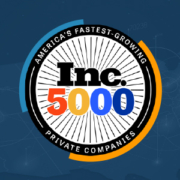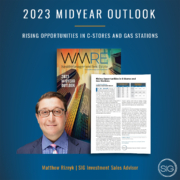August 28, 2023 – By Max Freedman. What makes up the ideal investment? Investors typically want lower risk, while also getting higher yield. The early education real estate asset class ticks both of these boxes but remains a niche investment today. This is because people are often unfamiliar with the sector’s for-profit business model and somewhat atypical, specialty purpose buildings. Here we’ll unpack the opportunity in the early education real estate sector for triple net investors to demystify it.
Risk Profile
Commonly, the early education asset class is immune to what is happening in the wider market. In a downturn, child care is a necessity so that parents can maximize their income with dual-parent full-time jobs. In an upturn, it’s a privilege because parents have disposable income and can afford child care. This means that there is demand for child care in both good times and bad.
In addition, the federal government considers early education so important that it backstopped with billions of dollars during the pandemic – the American Rescue Plan alone committed $24 billion to child care. What better guarantee of your ability to collect rent as a landlord? (By the way, this amount excludes generous state subsidies as well.)
Even so, potential investors can get stuck on the opportunity to re-lease early education real estate assets, especially if they’re more familiar with fast-moving industries such as restaurants. But early education flips the model. Leases in the early education sector are often longer than average. The lease for an early education property is typically 10 – 15 years, providing stability for both the landlord and tenant.
In addition, the early education business model has a much lower break-even and profitability threshold than businesses such as restaurants. There is constant, growing, unmet demand for child care: as an asset class it only grew by 0.6% between 2017 and 2022 yet the need for early education continues to increase as the US population grows.
So, where tenant replaceability is an issue with other triple net deals, the stickiness of early education businesses more than compensates for the risk of having to re-lease the building. As mentioned, early education tenants are safe tenants. They are government-backed, demand for their service outstrips supply, and their success doesn’t depend on current trends and whims of the market.
Higher Yield
Irrespective of what is going on in the markets, such as the price correction in real estate over the last 18 months, early education typically trades in the 6% to 7% yield range, an above-average yield over comparable triple net assets. This means that, with interest rates rising, early education is a great asset class that still gives investors a positive cash flow with today’s market interest rates.
Couple that with credit profiles that are at a premium compared to franchised triple net assets, and it’s not surprising their early education is starting to attract interest from investors who had previously disregarded it. With early education, landlords get more yield and a better balance sheet to back their lease, which is a compelling combination.
Financial Accessibility
It’s also worth pointing out that although the average price of early education assets we have listed at Sands Investment Group is $5 million, the range is broad, starting at $1 million through to $7 million+, making this an accessible asset for many investors. Too good to be true?
Investors might be now wondering what the gotchas are. Despite these obvious strengths and benefits of the asset class, how do investors choose the best individual deal, and what should they look out for?
Firstly, investors need to know that this is a highly fragmented market and there are implications if they choose to invest in an independent operator versus a corporate owner. The corporate-owned portion of the markets is typically more predictable and lower risk but makes up less than 10% of the entire market. So simply finding a deal can be a challenge. Part of the discovery process is knowing how the education business model works to evaluate the right real estate opportunity. Next, investors need to match the deal with the best credit.
This is where the Sands Investment Group team comes in. Our access to developers and the largest corporate operators in the early education space gives us inventory beyond the open market. Based on the investor’s target yield, we can best match early education triple net deals to the right credit profile for their portfolio.
Consult a SIG Early Education Real Estate Advisor
If you’re looking to get started, we have a team that specializes in Early Education Real Estate. We work with Franchisees and Corporations across the country as an outsourced real estate arm to assist with their growth and expansion.
View our Early Education Listings to explore available properties.
From a single unit Franchisee to Publicly Traded Companies, we can provide a multitude of financing and construction options to fuel growth.
We’re truly a one-stop-shop for all of your real estate needs. Call 844.4.SIG.NNN or contact us here to learn how we can support your next investment.














